After Effects of Treatment
After Effects Typically Experienced by Young Adult Cancer Survivors Post-Treatment
Research conducted by Emily S.
Neuropathy of the hands and feet = Neuropathy is the lack of sensation in the limbs nerve endings, due to chemo degrading the peripheral nerves. It causes a lack of balance when this nerve damage is found in the feet, due to the person’s lack of sensation on the bottom of the feet. This nerve damage is sometimes permanent, sometimes temporary.
Chemo Brain = Post-chemotherapy cognitive impairment (PCCI) is an aftereffect of chemotherapy. Chemo brain is a common term used by cancer survivors to describe thinking and memory problems that can occur after cancer treatment. Chemo brain typically affects one’s ability to multitask and one’s short-term memory. Chemo brain can last for up to five years post-treatment. It is described as a frustrating and sometimes debilitating side effect of cancer treatment. Some tricks to help are note-taking to help with short term memory loss issues and practice preforming multiple tasks.
Extreme Fatigue & Muscle Weakness = Chemo destroys the body’s ability to make all new cells. All of the cells in the body are affected, not just the cancer cells. Cancer-related fatigue, which interferes with usual functioning, is the most prevalent symptom for cancer patients; 75% of patients with various solid cancerous tumors had significantly increased fatigue scores compared to a matched control population (Bar-Sela, 2007). During chemotherapy treatment, fatigue symptoms can reach 100% of patients (Bar-Sela, 2007). The result of chemo is usually extreme fatique and muscle weakness, which can last for a significant time after treatment.
Achy Joints & Muscles = An after effect caused by chemo and steroids. Steroids are often prescribed to cancer patients in treatment for extended periods of time. Certain types of steroids, can cause joint damage, especially if used for an extensive amount of time. In addition, chemo can cause extensive weight loss, which usually causes muscle wasting as the body burns muscle for energy. Muscular atrophy is caused by muscle wasting (often caused by cancer treatment) and decreases quality of life as the sufferer becomes unable to perform certain tasks and worsens the risks of accidents while performing those tasks (like walking). Muscular atrophy increases the risks of falling in conditions such as IBM (inclusion body myositis).
Anxiety, Depression and Cancer-Related PTSD = In a large survey of 1,083 cancer survivors; young survivors were found to have significantly higher levels of anxiety (7.22) compared to the normative control group (4.87) (Mehnert, 2008, p. 387). In a study of 450 young adult cancer survivors, major depression affected 15% of men and 22% of women (Soliman, 2008, p. 59). Depression effects this population with rates for clinical levels of depression representing on average 25% (Deimling, 2002, p. 485). This is 3-fold to 4-fold that of individuals with no cancer diagnosis (Stein, 2008, p. 2584).
In addition, cancer diagnosis and treatment is considered a Type II trauma, because patients are exposed to prolonged, repeated, or multiple stressful events during cancer treatment. Individuals exposed to Type II trauma exhibit greater PTSD symptoms compared to individuals who experience a Type I trauma, which results from a discrete, single event (Kangas, 2002, p. 513).Most PTSD results from external events that pose an immediate threat, however cancer represents a protracted and internally based stressor that is ongoing (Kangas, 2002, p. 514). This is a key distinction from other traumas, as cancer-related trauma is a stressor that is triggered by an internally induced event rather than an external source of threat (Kangas, 2002; Green, 1998). This means the stressor cannot be physically avoided and is an ongoing event.
In a study that identified the psychosocial problems of 752 cancer patients it was found that more problems were reported by younger survivors (ages 18-54 yrs), women, nonwhites, those who were not married, and those with a household income of less than $20,000 a year (Baker, 2005, p. 2565). In addition, of the total population in this study more than 25% of adult cancer survivors at 1 year past diagnosis had problems including continued health problems, psychosocial problems, emotional discomfort, fears about the future, financial problems and difficulties in returning to former roles (Baker, 2005, p. 2575). More than two-thirds were concerned with their illness returning, nearly 60% were concerned about disease recurrence, and nearly 58% were fearful about their future (Baker, 2005, p. 2571).
It is important to note younger cancer patients (ages 18-54 yrs.) reported experiencing on average three more problems than older patients in this study (Baker, 2005, p. 2572). These problems include fertility issues, career choices/job discrimination, health insurance worries, financial needs, and feelings of vulnerability, isolation and helplessness (Baker, 2005, p. 2571).
Lastly, although these issues clearly affect the quality of life of cancer patients/survivors there are many studies that confirm that psychological symptoms, such as intrusion, depression and PTSD, do not predict disease progression of cancer within a patient (Cassileth, 1985; Jamison, 1987; Epping-Jordan, 1994).
Although one week at camp can certainly help these young adult survivors in their transition after cancer treatment, it cannot take away all of their issues. Discussing the benefits of regularly attending a young adult cancer support group for continued peer support, along with the benefits of guidance from an experienced therapist / counselor goes a long way towards breaking down the stigma around these tools, proven to be very helpful on the path toward recovery and survivorship for these young adults.
